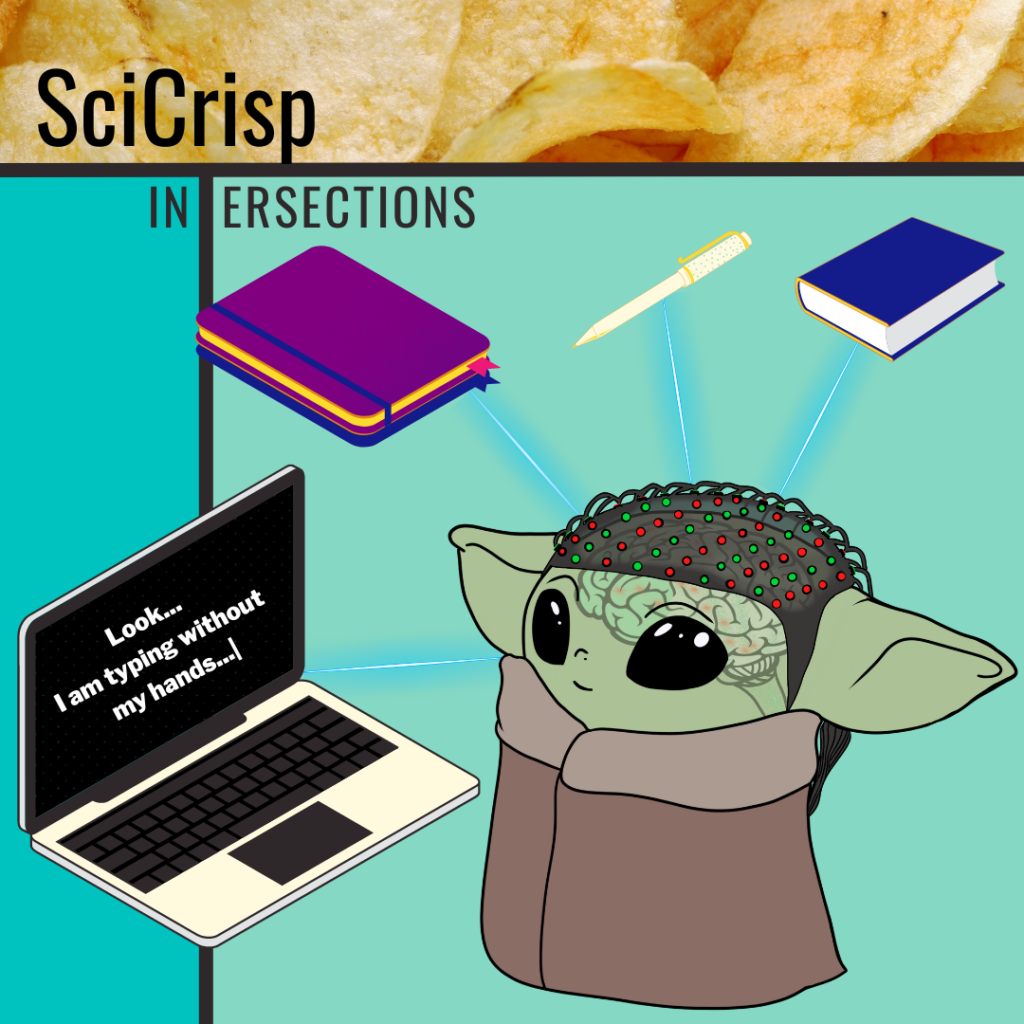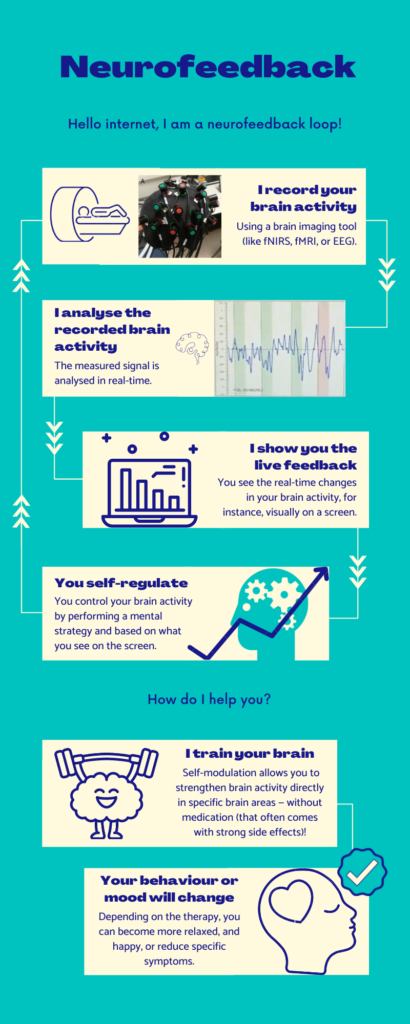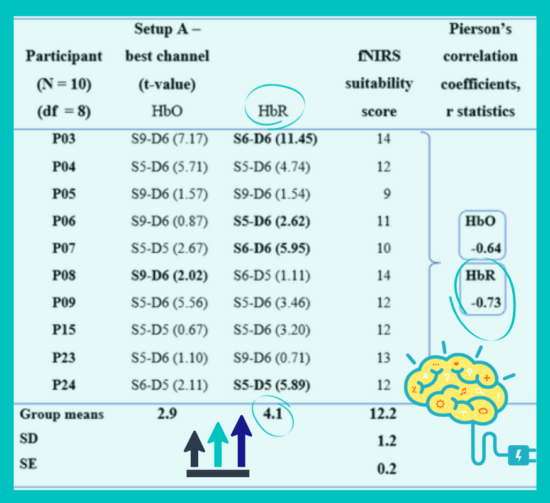“Controlling your brain activity: how to use Jedi mind tricks on yourself”
A story about the research: Sundqvist, S. (2020) ‘Signal quality assessment of functional near-infrared spectroscopy-based brain-computer interface for treating cerebral palsy children’, Master thesis, Maastricht University, Maastricht.
Written by
Suvi Sundqvist

This blog post will answer these QUESTIONS:
- What is neurofeedback and something science fiction-y called a brain-computer interface?
- How can you learn to control your mind?
- Did you know you can indirectly measure brain activity by shining a light on your head?
- Then what is the haemodynamic response and neurovascular coupling?
A prequel of the research
A long time ago in a galaxy far, far away… Or actually, the story starts here in the Milky Way galaxy just a few years ago when I learned about a science fiction-y topic in reality. Have you heard about the Jedi mind trick? Obi-Wan Kenobi explained it like this:
With a mind trick, a Jedi can implant a suggestion in someone else’s mind and have them do as the Jedi wishes.
I bet I am not the only one who wondered, what if you could use Jedi mind tricks? More importantly—and to avoid the dark side of the Force, of course—I contemplated if anyone could use Jedi mind tricks for a kind purpose. What might that be?
As I delved deeper into my studies of Neuroscience and Psychology during my graduate program, I became fascinated by certain devices with the potential to improve the lives of people with conditions affecting movements, such as Cerebral Palsy (CP). CP is the most common lifelong movement disorder that appears in children. People with CP have uncontrollable movements and stiff muscles, making their movements awkward. Having CP can include related conditions such as seizures and intellectual disabilities. With no cure in sight for CP, improving their lives becomes an important challenge to solve.
I eventually joined a team at my university focused on researching brain-computer interfaces (BCIs). A BCI can be the only way for paralysed people to communicate without speech. A BCI can be a speller program operated with thoughts and is also used to operate devices (such as prosthetic limbs and wheelchairs). Another use of BCIs is in neurogaming and home automation, including lighting control—bearing a resemblance to controlling devices with the power of the Force.
BCIs come in various forms. One example of an invasive BCI is Neuralink, a company founded by Elon Musk. Its developed device involves implanting electrodes in the brain. But a non-invasive BCI does not require surgery, nor does it stimulate the brain. Non-invasive BCIs measure brain activity safely and convert these changes in brain activation into an output.
Lastly, I learned about neurofeedback and realised that it was the Jedi mind trick device I had hoped to discover. A type of BCI, neurofeedback is a medicine-free complementary treatment method. It is a promising tool that allows a person to self-regulate their brain activity by performing so-called mental strategies while observing live feedback of their brain activity. The feedback can be anything desired. For instance, a company called Mendi has created an at-home neurofeedback system. They developed a game that reacts to the desired brain activity with rewards (which they show in this video).
With neurofeedback, you learn to activate certain brain regions to reduce symptoms that are believed to be caused by irregular activation in some parts of the brain. Through repeated use, neurofeedback changes the wiring and functionality in targeted brain areas and alleviates symptoms associated with various conditions. In essence, it is a safe workout for the brain. Figure 1 provides a visual representation of the process.

Understandably, one could see the concept of a brain training device as something straight out of science fiction. In reality, neurofeedback is a promising complementary treatment method that can help reduce symptoms of conditions such as attention deficit hyperactivity disorder (ADHD), depression, stroke, and more. Knowing its potential to help motivated me to deepen my understanding of BCIs, neurofeedback, and the non-invasive brain imaging tool known as functional near-infrared spectroscopy (fNIRS). If you are not familiar with these, you can read the following in a nutshell section first.
But could the Jedi mind trick device improve the lives of people with CP? The team researching the topic and I evaluated a neurofeedback application with fNIRS to improve therapeutic options for CP children. Since fNIRS is portable and can measure a person that moves, it is an obvious choice for measuring CP children’s brain activity.
When treating CP children, a mental strategy activating the motor cortex is needed. The supplementary motor area (SMA) is a brain area in the motor cortex that is processing the planning of movement. A suitable mental strategy for SMA is when you mentally imagine your hand moving. Now, what if we try activating your SMA? All you need to do is mentally imagine drawing, but without moving your hand. Congratulations, you just activated your SMA!
How do you then treat movement symptoms of CP children with a mental strategy such as mental drawing? When they see the live visual feedback of their SMA’s activity on a screen, they know that they currently activate that brain area. To increase the SMA activation they can for example mentally imagine drawing faster. In real-time, fNIRS detects the increased brain activity and they will notice the feedback change accordingly. This way they learn how to correctly perform the mental strategy and improve their movement over time. And this process is called self-modulation—or why not a Jedi mind trick to treat yourself?
Nice plots and what do they really mean
The BCI team and I had asked participants to perform different mental strategies that activated the SMA. The mental strategies included mental drawing in combination with mental talking, such as:
- covertly counting while imagining drawing numbers with the right hand.
- imagining checking a list with the hand and covertly saying “check” or “correct”.
To evaluate how well fNIRS could be used to help CP children, we tested if there is a relationship between peoples’ physiological characteristics and their brain activity during these mental strategies. If you remember the in a nutshell section, it is harder to measure brain activity through dark tissue. This means that physiological characteristics, such as dark hair colour, will make the person less suitable for using fNIRS.
My research included correlating values measuring participants’ physiological characteristics with values showing how much the brain’s SMA was activated. My hypothesis was that participants could activate their SMA while performing the mental strategies, and secondly, that fNIRS measures the amplitude of HbO and HbR concentration in the blood flow equally.

Firstly, the oxygenated (HbO) and deoxygenated blood (HbR) values indicate certain source-detector pairs (here called S9-D6, etc.). They were placed at different locations on the scalp to measure the SMA activation. Secondly, the t-values for each source-detector pair are in parentheses. They show the brain’s activity for each location during the mental strategy. In this case, the higher the values, the more active. Lastly, the fNIRS suitability score values measured how suitable the fNIRS device was with regard to the participant’s physical characteristics (such as hair thickness, hair colour, etc.). The lower the score, the better fNIRS is suited for the person.
The right-hand HbO and HbR values in figure 2 show that the HbR values were more strongly correlated with the fNIRS suitability score than the HbO values. This means, that HbR concentration has a better signal than HbO. And based on this it is safe to say that fNIRS measures the amplitude of deoxygenated concentration in the blood flow more effectively than oxygenated concentration. Luckily, this also means that the participants were able to control their brain activity and used Jedi mind tricks on themselves.
Take-home messages
- A type of brain-computer interface, neurofeedback is a promising medicine-free complementary treatment method that measures brain activity and provides live feedback to the person, allowing them to control their brain activity by performing mental strategies. Figure 1 provides further information on the neurofeedback process.
- Through neurofeedback, many have reported reduced symptoms associated with ADHD, depression, and stroke to name a few conditions.
- NIR light can measure changes in oxygenated and deoxygenated blood, thereby providing an indirect measurement of brain activation by measuring the blood flow associated with neural activity.
- Neurovascular coupling refers to a connection between neuronal activity and blood flow: when we use an area of the brain, the neurons in that brain area collect nutrients from the blood flow (such as oxygen).
- We showed that deoxygenated blood concentration is measured with fNIRS more effectively than oxygenated blood concentration. But most importantly, we showed that many participants used Jedi mind tricks on themselves and hence, an fNIRS-based BCI is a promising tool to help CP children!
Links
Original thesis/article:
References:
- Goebel, R. (2007). Localization of Brain Activity using Functional Magnetic Resonance Imaging. In C. Stippich (Ed.), Clinical Functional MRI: Presurgical Functional Neuroimaging (pp. 9-51). Berlin, Heidelberg: Springer Berlin Heidelberg. https://doi.org/10.1007/978-3-540-49976-3_2
- Loriette, C., Ziane, C., & Ben Hamed, S. (2021). Neurofeedback for cognitive enhancement and intervention and brain plasticity. Revue Neurologique, 177(9), 1133-1144. doi:https://doi.org/10.1016/j.neurol.2021.08.004
- NIRx Medical Technologies LLC (2018) NIRStar™ 15.2 User Manual, For use with NIRx NIRSport™, NIRScout™ and NIRScoutX™ Imagers, NY, USA
- Omejc, N., Rojc, B., Battaglini, P. P., & Marusic, U. (2019). Review of the therapeutic neurofeedback method using electroencephalography: EEG Neurofeedback. Bosn J Basic Med Sci, 19(3), 213-220. doi:10.17305/bjbms.2018.3785
- Ruan, J., Bludau, S., Palomero-Gallagher, N., Caspers, S., Mohlberg, H., Eickhoff, S. B., . . . Amunts, K. (2018). Cytoarchitecture, probability maps, and functions of the human supplementary and pre-supplementary motor areas. Brain Struct Funct, 223(9), 4169- 4186. doi:10.1007/s00429-018-1738-6
- Sukal-Moulton, T., de Campos, A. C., Alter, K. E., Huppert, T. J., & Damiano, D. L. (2018). Relationship between sensorimotor cortical activation as assessed by functional near infrared spectroscopy and lower extremity motor coordination in bilateral cerebral palsy. Neuroimage Clin, 20, 275-285. doi:10.1016/j.nicl.2018.07.023
- Zhang, J., Jadavji, Z., Zewdie, E., & Kirton, A. (2019). Evaluating If Children Can Use Simple Brain Computer Interfaces. Front Hum Neurosci, 13, 24. doi:10.3389/fnhum.2019.00024
Could be interesting to read: